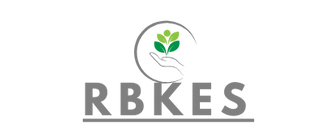Introduction
Buying a home is one of the most significant financial commitments you’ll ever make, and for most people, securing a mortgage loan is a key part of the process. A mortgage allows you to borrow money to purchase a property, which you then repay over time, typically with interest. However, taking out a mortgage is a long-term commitment that requires careful consideration.
In this article, we’ll walk you through everything you need to know before taking out a mortgage loan, from understanding your financial readiness to choosing the right loan type and lender. By understanding the ins and outs of the mortgage process, you can make an informed decision that suits your needs and ensures financial stability.
1. Understand Your Financial Readiness
Before you start looking for a mortgage, it’s important to assess your financial situation. Taking on a mortgage is a huge responsibility, and it’s essential to ensure that you’re financially ready to handle it.
a) Evaluate Your Credit Score
Your credit score is one of the most important factors lenders use to assess your eligibility for a mortgage. A higher credit score will typically result in a better interest rate, while a lower score can mean higher rates or even rejection.
- Good Credit: A credit score of 700 or above is generally considered good and may help you secure a mortgage with favorable terms.
- Bad Credit: If your credit score is below 600, you may struggle to find affordable mortgage options, though it’s still possible to secure a loan with a co-signer or higher interest rates.
Tip: Check your credit report before applying for a mortgage. If there are any errors, dispute them with the credit bureau to potentially improve your score.
b) Assess Your Debt-to-Income Ratio (DTI)
Lenders also look at your debt-to-income ratio (DTI) to determine how much of your income goes toward paying off debt. A lower DTI indicates that you have enough income to handle your monthly mortgage payments.
- Ideal DTI: Most lenders prefer a DTI ratio of 43% or lower. If your DTI is higher, consider paying down some existing debt before applying for a mortgage.
Tip: Work on reducing any outstanding debt to improve your DTI and increase your chances of mortgage approval.
2. Save for a Down Payment
A down payment is the portion of the home’s purchase price that you pay upfront, and it significantly impacts your mortgage loan. The larger your down payment, the less you need to borrow, which means lower monthly payments and less interest paid over the life of the loan.
- Typical Down Payment: Traditionally, a 20% down payment was the standard. However, many loan programs now allow as little as 3% to 5% down for first-time buyers.
- Avoiding PMI: If your down payment is less than 20%, most lenders will require you to pay for private mortgage insurance (PMI) to protect them in case you default on the loan.
Tip: Aim for a larger down payment if possible, as it will reduce your monthly mortgage payments and save you money on interest in the long run.
3. Determine How Much You Can Afford
It’s essential to figure out how much you can comfortably afford before applying for a mortgage. While a lender may approve you for a larger loan, it’s important not to stretch your budget too thin.
a) Factor in All Housing Costs
In addition to the monthly mortgage payment, you’ll also need to account for property taxes, homeowners insurance, and potentially homeowners association (HOA) fees. These costs can add up quickly and should be included in your budget when determining how much mortgage you can afford.
- Property Taxes: These can vary widely depending on your location and the value of the property.
- Insurance: Homeowners insurance is a requirement for most mortgage loans. It protects you against property damage and loss.
- HOA Fees: If you’re purchasing a property within a community governed by an HOA, be sure to factor in any monthly or annual fees.
Tip: Use a mortgage calculator to estimate your total monthly payment, including all of these factors, to determine if the loan fits within your budget.
4. Understand the Types of Mortgage Loans
There are several types of mortgage loans available, each with different features. Understanding these options will help you choose the right one for your needs.
a) Fixed-Rate Mortgages
A fixed-rate mortgage has an interest rate that remains the same throughout the life of the loan. This means your monthly payment stays predictable, which is a good option if you plan to stay in your home for a long period.
- Pros: Stability and predictability of monthly payments.
- Cons: The interest rate may be higher than an adjustable-rate mortgage.
b) Adjustable-Rate Mortgages (ARMs)
An adjustable-rate mortgage has an interest rate that can fluctuate based on market conditions. Initially, ARMs often offer lower interest rates, but they can rise over time, which means your monthly payments could increase.
- Pros: Lower initial interest rates.
- Cons: The risk of higher payments in the future if interest rates rise.
c) Government-Backed Loans
Government-backed loans are offered by lenders but insured by the government, making them more accessible to people with lower credit scores or less money for a down payment.
- FHA Loans: These loans are insured by the Federal Housing Administration and are ideal for first-time homebuyers who have a smaller down payment (as low as 3.5%).
- VA Loans: Available to veterans and active-duty military personnel, VA loans often require no down payment and have competitive interest rates.
- USDA Loans: These loans are available for rural homebuyers and may also offer no down payment.
Tip: Consider the type of mortgage loan that fits your financial situation and long-term plans. Fixed-rate loans are ideal for those seeking stability, while ARMs may be more suitable for short-term buyers.
5. Compare Lenders and Interest Rates
The mortgage market is highly competitive, and rates and terms can vary significantly between lenders. It’s important to shop around and compare offers from different banks, credit unions, and online lenders.
a) Interest Rates and APR
While the interest rate determines how much you’ll pay each month in interest, the APR (Annual Percentage Rate) represents the total cost of the loan, including interest and fees. Be sure to compare both interest rates and APRs to get a full picture of the loan’s cost.
b) Fees and Closing Costs
In addition to the loan’s interest rate, lenders may charge various fees, such as origination fees, application fees, and appraisal costs. Closing costs (which include fees for the title search, attorney, and inspection) can also add up to several thousand dollars.
Tip: Always ask for a Loan Estimate document, which outlines the terms and costs associated with the mortgage. Use this to compare different lenders’ offers.
6. Consider the Loan Term
The length of your mortgage loan term will affect your monthly payments and the total amount of interest you pay over the life of the loan. The two most common loan terms are:
- 15-Year Mortgage: Offers higher monthly payments but allows you to pay off the loan faster and save on interest.
- 30-Year Mortgage: Offers lower monthly payments but results in higher interest payments over time.
Tip: Choose a loan term that fits within your budget and aligns with your long-term financial goals. A 30-year mortgage is more affordable in the short term, but a 15-year mortgage can help you pay off your home faster and save money in the long run.
7. Get Pre-Approved for a Mortgage
Before you start house hunting, it’s a good idea to get pre-approved for a mortgage. A pre-approval letter from a lender shows that you’re a serious buyer and can afford a certain loan amount. This can give you a competitive edge in the housing market and streamline the buying process.
- Pre-Approval vs. Pre-Qualification: Pre-qualification is an informal estimate of how much you can borrow, while pre-approval involves a more thorough review of your financials.
Tip: Getting pre-approved helps you understand your budget and shows sellers that you’re ready to make a serious offer.
8. Be Prepared for the Closing Process
Once you’ve chosen a mortgage lender and found a home, you’ll go through the closing process, which can take several weeks. During this time, the lender will conduct an appraisal, finalize the loan documents, and verify your financials.
- Closing Costs: Be prepared to pay closing costs, which typically range from 2% to 5% of the home’s purchase price. These costs can include inspections, title insurance, and attorney fees.
- Final Review: Before closing, review the final loan documents carefully to ensure that everything is accurate and in line with your expectations.
Tip: Work closely with your lender and real estate agent to ensure that the closing process goes smoothly.
Conclusion
Taking out a mortgage loan is a major decision that requires careful thought and planning. By understanding your financial readiness, comparing loan options, and knowing what to expect throughout the mortgage process, you can make an informed decision that aligns with your long-term goals. With the right preparation, you can secure a mortgage that helps you achieve your dream of homeownership while maintaining financial stability.

